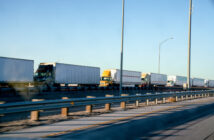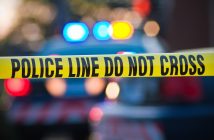Studded along certain sectors of the border between Arizona and Mexico are sensors, which are used to tip off border security when smugglers and cartel members are crossing into U.S. territory. In the early hours of Oct. 2, 2012, U.S. Border Patrol agent Nicholas Ivie responded to a tripped sensor near Naco, Arizona—an action that resulted in his death. (Customs and Border Protection Release, Oct. 2, 2012)
At first, reactions to the tragedy assumed cartel violence was to blame. Rep. Ron Barber (D-Ariz.), who recently filled the seat of Gabrielle Giffords, called the tragedy “a powerful reminder that our borders are far from secure” and warned that “we cannot cede one foot of American soil to these cross-border bandits.” (Rep. Ron Barber Statement, Oct. 2, 2012)
While Rep. Barber’s statements are certainly true, investigations revealed an unexpected twist: Agent Ivie was killed not by remorseless smugglers, but by friendly fire from fellow agents. According to reports, when Agent Ivie arrived at the tripped sensor’s location, other agents were already there. Agent Ivie is believed to have mistaken those agents for smugglers, and a fatal shoot-out ensued. (Politico, Oct. 8, 2012)
So far, released evidence indicates two major technology failures led to the confusion that resulted in Ivie’s death. The first deficiency Agent Ivie encountered was that the sensor technology puts him at a disadvantage by forcing him to respond blindly to an unknown situation. Not providing the aid of visuals, sensors are unable to differentiate between passing smugglers and other movement, such as grazing animals, leaving Border Patrol agents uncertain of the situation to which they are responding. Agent Ivie was forced to evaluate circumstances quickly upon arrival, under pressure and a mere 20 yards from the other agents. (AZ Central, Oct. 7, 2012)
Better communication between agents likely would have prevented this tragedy, which brings us to the next technology failure. Leaked intel indicates that Agent Ivie lost radio contact while he was checking the tripped sensor. He lacked the ability to communicate with anyone who could have confirmed the identity of the other agents already at the scene. The lack of radio also left him unable to call for backup, which probably contributed to his panic. (AZ Central, Oct. 7, 2012)
The above failures illustrate the shortcomings and hazards of technology currently being used along the border, and provide a strong case for a border strategy that uses technology as a tool that is complementary to adequate troops and physical barriers to entry, rather than a substitute. Yet the Obama Administration continues to push for heavier reliance on technology in lieu of—instead of in addition to—boots on the ground, reducing the number of National Guard troops stationed along the border from 1200 to 300 in April. (FAIR Legislative Update, Apr. 23, 2012)
Without the assistance of troops, the Obama Administration has left Border Patrol agents in the difficult position of covering greater spans of land alone, resulting in greater reliance on technology. In 2011, Sec. Napolitano announced the use of brand new aerial surveillance technology—such as unmanned drones—along the border as an alternative to National Guard troops. (San Francisco Chronicle, Dec. 13, 2011; see also FAIR Legislative Update, Dec. 19, 2011)
And in April of this year, U.S. Customs and Border Protection (CBP) announced the resurrection of the SBInet, a border technology program that was cut in 2010. (FAIR Legislative Update, Apr. 16, 2010) According to a GAO report, SBInet’s system of nine security towers along the border, equipped with night vision cameras, radar and sensors, was plagued with “a growing number of system performance and quality problems” that outpaced DHS’ ability to develop solutions, leading Sec. Napolitano to pull the plug. (GAO Report, 2010; see also DHS Press Release, March 16, 2010) Nevertheless, the questionable program has been restarted, without the addition of more border patrol agents or physical fencing, and in spite of the reduction in National Guard troops.
Of all of the life-threatening dangers our Border Patrol agents are exposed to, inadequate technology should never be one of them. Our agents should be provided with tools that are guaranteed to work and enable them to perform their job—not ad hoc measures that put their lives in jeopardy.




2 Comments
I’d say a bit convenient for everything and everyone for PC PURPOSES..
It Also Illustrates the Lunacy of Orderring Our National Guard on the Border to Assist Without Arms